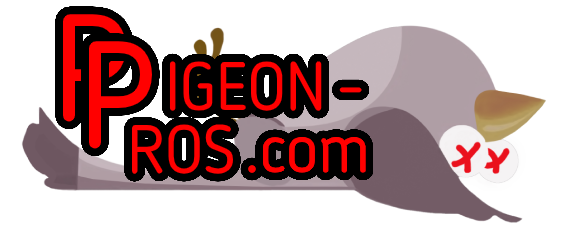The groundhog is also referred to as a chuck, wood-shock, groundpig, whistlepig, whistler, thickwood badger, Canada marmot, monax, moonack, weenusk, red monk and, among French Canadians in eastern Canada, siffleux.
groundhog (Marmota monax), are round, short-legged rodents that belong to the squirrel family.  They measure 16-27 inches from nose to tail-tip and weigh between 5 and 10 pounds. Their tail is short relative to their body size, typically only about 4-7 inches long. Woodchucks are brown overall, but may have a frosted appearance because each individual hair is tipped with black and white bands. Being expert burrowers, they have powerful forefeet with long, curved claws. They also have very sharp chisel-like front teeth.
They measure 16-27 inches from nose to tail-tip and weigh between 5 and 10 pounds. Their tail is short relative to their body size, typically only about 4-7 inches long. Woodchucks are brown overall, but may have a frosted appearance because each individual hair is tipped with black and white bands. Being expert burrowers, they have powerful forefeet with long, curved claws. They also have very sharp chisel-like front teeth.
They are shy and usually will retreat into a den if approached, but if they are cornered or feel threatened they may become aggressive. Woodchucks are diurnal animals, which means they are active during the day. They spend this time feeding and basking in the sun outside their burrows. Woodchucks are excellent climbers so it is not uncommon to spot one in a tree.
Nuisance Groundhogs Problems
Woodchuck Feeding Damage
Groundhogs can eat over a pound of food a day. It’s difficult to grow a vegetable garden with a woodchuck residing nearby. Woodchucks are primarily vegetarians and have been known to happily eat 46 different types of plants. They especially like the taste of flowers and vegetables which can annoy home owners trying to grow plants in home gardens as well as commercial farmers. Some of their favorites are beans, peas, carrot greens, tomatoes, lettuce, apples, various grasses, clover and other garden crops. Woodchucks also have a thing for fruit and will climb trees to reach fruit above. They also feed on leaves of certain trees like mulberry. Many home owners feel that nuisance woodchuck removal is their only option.
Damage to agricultural crops such as alfalfa, soybeans, corn, beans, squash, and peas can be extensive. Soy beans are hit exceptionally hard by woodchucks.
Soybeans damaged by woodchucks
The area of damage appears as a semi-circle around the edge of the field. Groundhogs begin damaging soybean plants soon after emergence and continue damaging plants throughout the growing season as long as the plants are green and succulent. The area of damage will grow larger through time as the groundhogs seek out new growth further from their burrow. The best remedy for this is to remove groundhogs quickly.
While white-tailed deer may damage more individual soybean plants than do groundhogs, groundhog damage generally results in higher yield loss per plant than does that caused by deer. Groundhogs concentrate their feeding around den sites and do not travel far from the safety of their dens. Thus, groundhogs feed more extensively on individual plants than do deer. Individual plants repeatedly damaged by groundhogs often will have few leaflets remaining, with plants closer to the burrow having fewer leaflets and stunted growth compared to those farther from the burrow.
Groundhog Gnawing Damage
Woodchucks are in the squirrel family and also must gnaw constantly to keep their incisor teeth from growing. In spring, especially, they may gnaw on the stems and trunks of trees and sometimes strip the bark. They will also claw and dig at the base of newly planted fruit trees. Like squirrels, woodchucks will gnaw randomly on decks, siding, and outdoor furniture.
They gnaw and claw fruit trees and ornamental shrubs.Woodchucks may also eat flowers, and the bark of young trees. The constant gnawing can cause damage in orchards and nurseries.
Woodchucks have been known to gnaw on underground power cables, which can cause electrical outages. Even rubber hoses in vehicles, such as those used for vacuum and fuel lines, have been found with woodchuck gnaw marks.
Groundhog Burrowing Damage
Woodchucks normally dig their den burrows in brushy clumps along steep edges of fields, pastures, along the road or river embankments. Woodchuck burrows are also found along fence rows and stone walls; near building foundations and at the base of trees. But they will also burrow under sheds, porches, decks, or walkways, roadways and trees. Groundhog burrows or dens can be huge (up to 50 feet long) with many side passages and multiple entrances. They can be up to 5 feet deep!
Their burrowing can pose problems in both rural and urban locations. In urban settings, their tunnels will damage and dry out the roots of trees. Their burrowing along building foundations can cause damage can undermine building foundations because of the resulting sinkholes and settling damage that will undermine the whole structure, resulting in costly repairs.
Groundhogs can cause driveways and parking lots to cave in and rock walls to collapse. A growing population of woodchucks can weaken roadways, retaining walls, patios, and slabs under homes creating expensive repair work that will need to be taken care of.
For farmers, collapsing woodchuck burrow systems are a hazard for livestock which can be seriously injured if they stumble into woodchuck holes. Horses and their riders can be injured this way as well.
Groundhogs also cause damage to equipment by making holes in the fields, which can break the axles on a lawn tractor or a frames equipment as it goes through the field. Cutter blades on farm equipment can be damaged from the mounds of dirt at burrow entrances.
